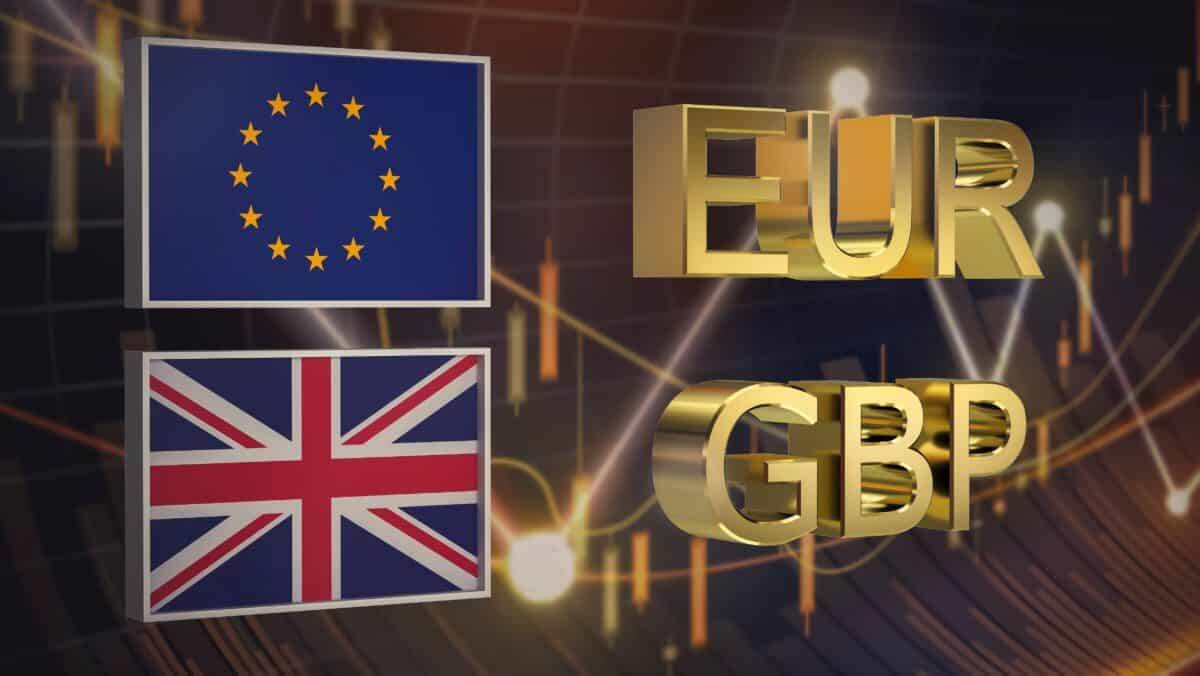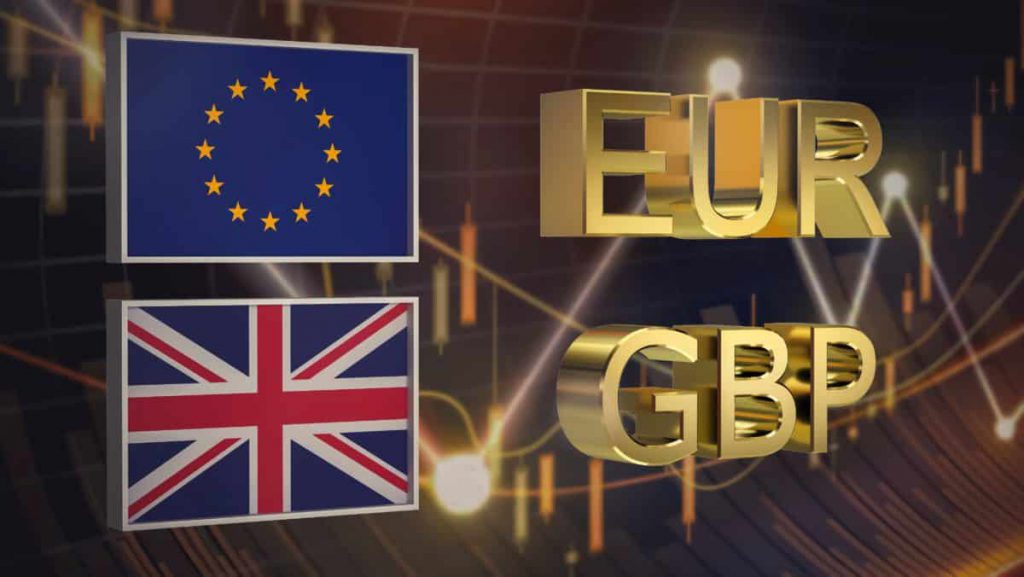
05 May chart overview for EURUSD and GBPUSD
- During the Asian session, the euro lost one part of yesterday’s gains.
- During the Asian session, the British pound weakened after a strong rush from yesterday afternoon after the Fed raised the interest rate.
- German factory orders dropped more than expected in March.
- The service sector in the U.K. expanded at a stronger pace in April.
EURUSD chart analysis
During the Asian session, the euro lost one part of yesterday’s gains. The US Federal Reserve raised the interest rate by 0.50% last night for the first time since 2000. However, the continuation of the strong increase in the rate was dropped after the chairman Jerome Powell rejected such a possibility. Namely, he said that the increase of 0.75% at the next meeting in June is not on the agenda, so the American currency weakened. And most market participants expected such an opportunity. A meeting of EU member states representatives is being held today, and a new set of sanctions against Russia is expected to be adopted soon. An embargo on oil imports by the end of this year is most likely. The euro is exchanged for 1.05920 dollars, weakening the common European currency by 0.24% since the beginning of trading tonight. This morning’s maximum was at 1.06400, and after that, we see a pullback to support at the 1.05800 level. We have additional support in the MA20 moving average, and now we need a break above 1.06000 levels in order to expect to return to the bullish side. We need a drop in EURUSD below 1.05800 levels for the bearish option. The next lower support is in the zone around 1.05400 levels, then psychological 1.05000.
Chart:

GBPUSD chart analysis
During the Asian session, the British pound weakened after a strong rush from yesterday afternoon after the Fed raised the interest rate. A regular meeting of the Bank of England is being held today. At 13:00, a decision on the reference interest rate is expected with an accompanying announcement. Expectations are that the rate will be increased from 0.75% to 1%. This could further strengthen the pound if there are no contradictory statements by BOE officials. During the Asian session, the pair moved above 1.26000; at the very end, the pound gave way and fell to the 1.25188 level. She found support here, and then we see a recovery to the current 1.25620 levels. If the recovery continues, our re-target is the previous resistance zone 1.26000-1.26400. For the bearish option, we need a new GBPUSD pullback to support at 1.25200. A break below this support brings us further to 1.25000 levels, then to 1.24600 levels.
Chart:

Market overview
Falling German factory orders
German factory orders dropped more than expected in March, reflecting the impact of the war in Ukraine on industrial activity.
Factory orders fell 4.7 % in March, according to data released by Destatis on Thursday. This was worse than the 0.8 % drop in February and the 1.1 % drop expected by economists.
The total decline in demand was largely driven by a 6.7 % drop in foreign orders. Domestic orders fell moderately by 1.8 %. Within foreign demand, orders from outside the eurozone fell by 13.2 %, while from the eurozone rose 5.6 %.
German order books were filled optimistically at the beginning of the year but have started to weaken since then, said the ING economist. The war in Ukraine and new delays in the supply chain in China will only add more pressure to orders and on the entire economy in the coming months.
U.K. Services Purchasing Managers Index
The service sector in the U.K. expanded at a stronger pace in April, although increased costs and the war in Ukraine together curbed the pace of expansion, the results of the S&P Global survey showed on Thursday.
The Chartered Institute of Procurement & Supply Manager’s Index reached 58.9 in April, above the current estimate of 58.3 but down from 62.6 in March.
Entrance costs have grown almost 26 years of data collection driven by increased fuel costs, with higher energy costs and wages. In return, the companies raised their own fees at a rate that was only partially below the March record.
Despite facing significant cost pressures, service providers continued to increase staff numbers, especially in response to the rise in new jobs.
Issues of the rising cost of living and war in Ukraine undermined confidence at the beginning of the second quarter, and the mood fell to its lowest level in a year and a half.
Duncan Brock, director of the group at CIPS, said the following: “Although the main index remained in the territory of growth, the service sector is showing signs of boiling because the effects of the highest prices over 26 years have affected orders and business mood. “


